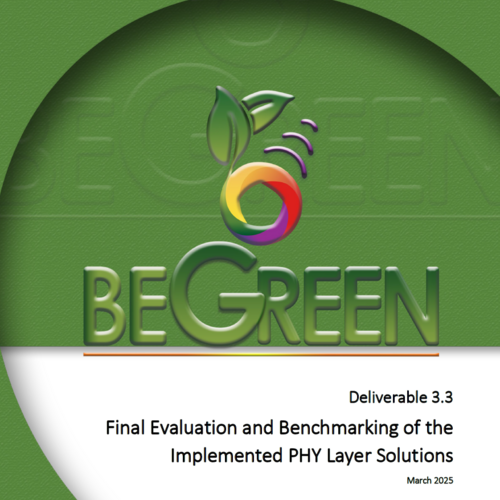D3.3 - Final Evaluation and Benchmarking of the Implemented PHY Layer Solutions
About
The primary aim of BeGREEN D3.3 is to present the final developments and evaluation of the proposed physical (PHY) layer enhancements and optimization strategies. In BeGREEN D3.1, the State-of-the-Art (SotA) on PHY mechanisms energy consumption was described and innovative solutions and enhancements were suggested. In BeGREEN D3.2, the details of the specific solutions and algorithms developed in BeGREEN were captured. Additionally, their potential in improving energy efficiency (EE) in cellular networks and power measurement results were shown. A wide range of solutions and modules were discussed, each with its unique angle on the O-RAN/3GPP framework for 5G deployments, as well as forward looking to 6G. BeGREEN D3.3 presents the final achievements for improving the EE of PHY layer functions and using advanced PHY layer technologies, like Integrated Sensing and Communication (ISAC) or Reconfigurable Intelligent Surfaces (RISs), as an enabler for improving the EE of the network. It is shown how acceleration, using advanced architectures, can be used to decrease the power consumption of modules with high computational complexity in both the distributed unit (DU) and the centralized unit (CU). Novel radio unit (RU)-related power optimizations are also presented, that is power amplifier (PA) blanking, envelope tracking, and artificial intelligence (AI)-based digital pre-distortion (DPD) algorithms. Also, the coverage extension by using ISAC for optimal allocation of network resources and power efficient RIS for replacing RUs are demonstrated. Finally, interference management methods that can strongly affect the EE of the network utilizing both base stations (BSs) and relays are analysed. Combining the different methods in next generation networks has the potential of being a significant factor in improving their power efficiency, making them greener and environmentally friendly.
Editor
Israel Koffman (RunEL)





